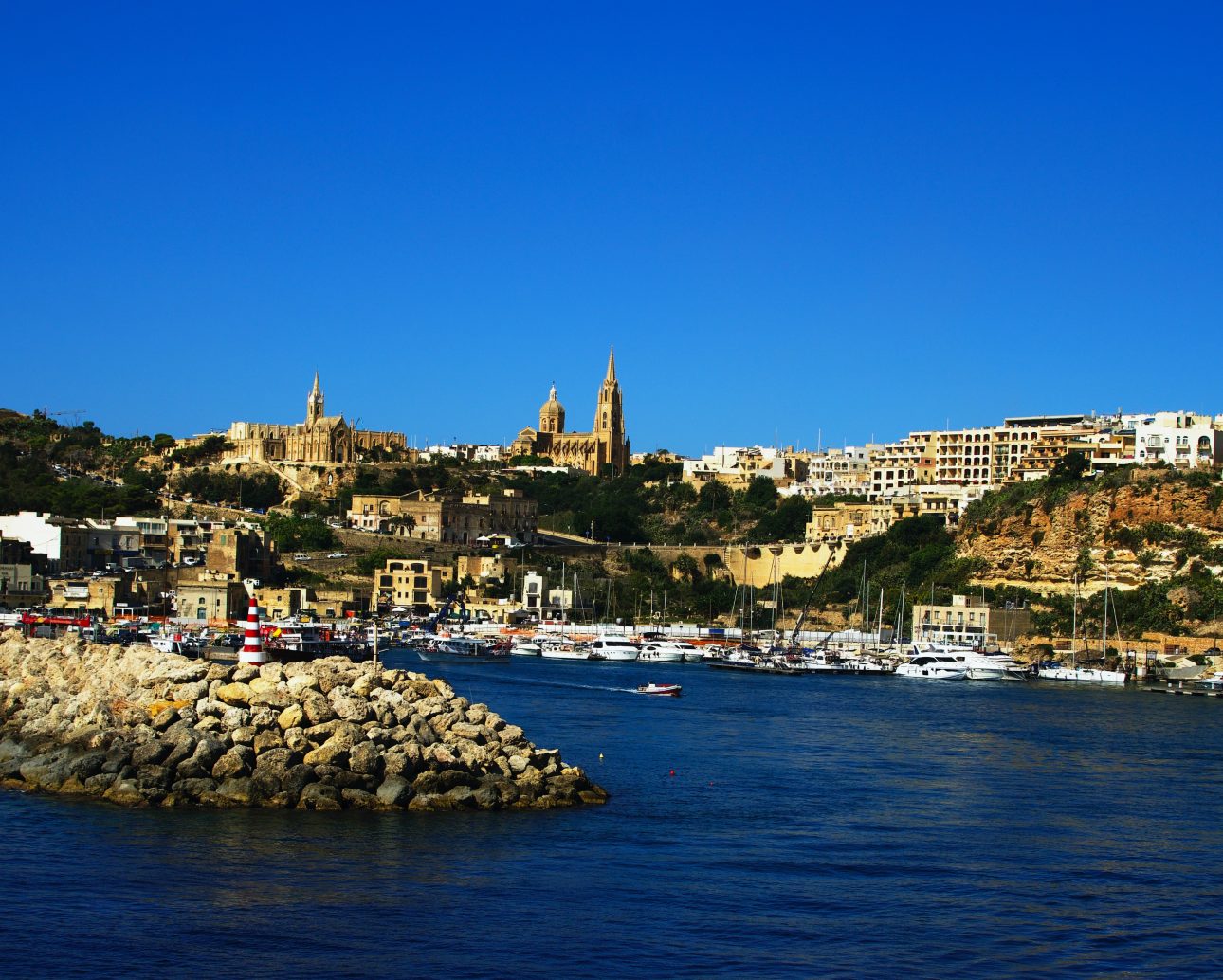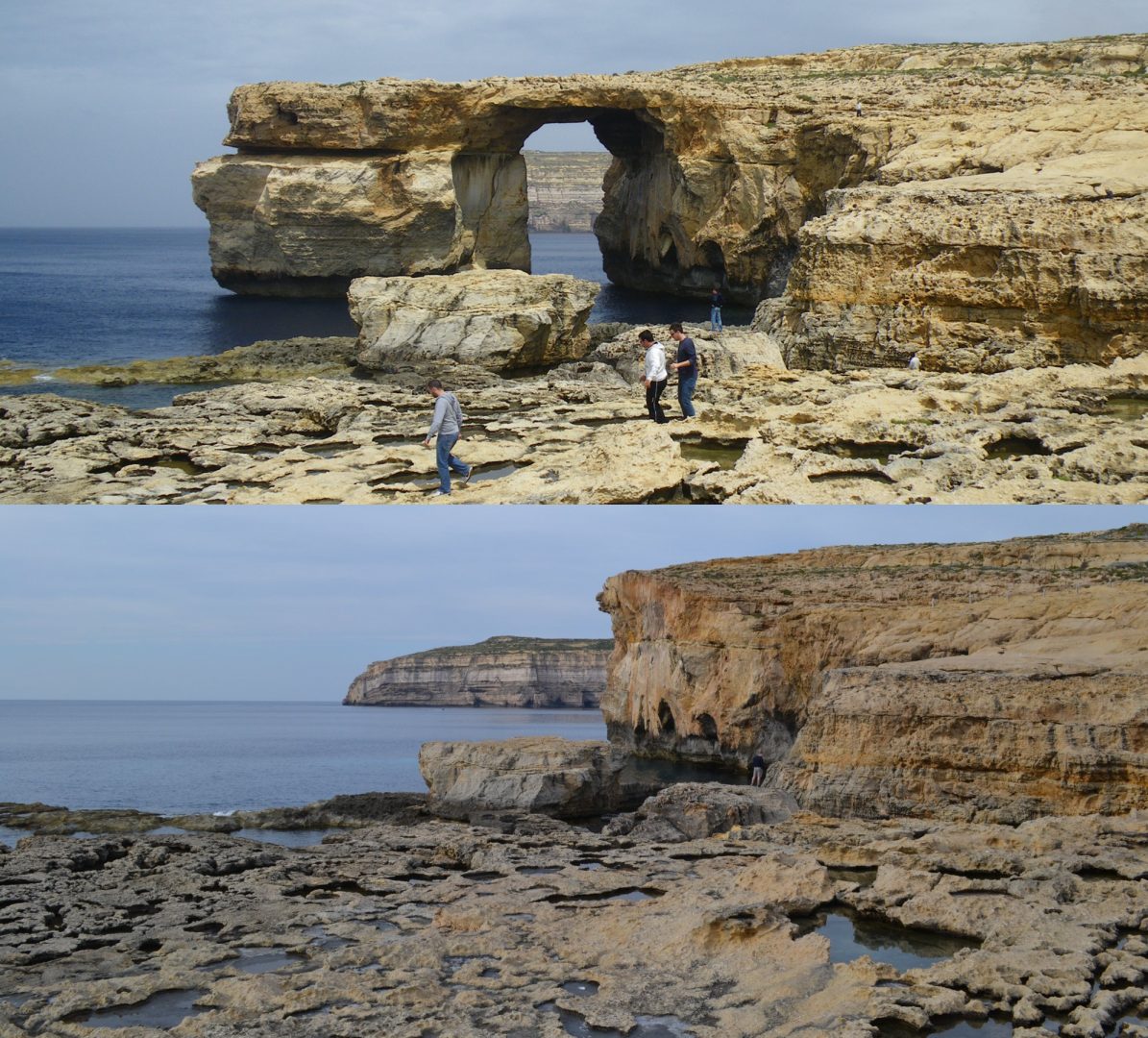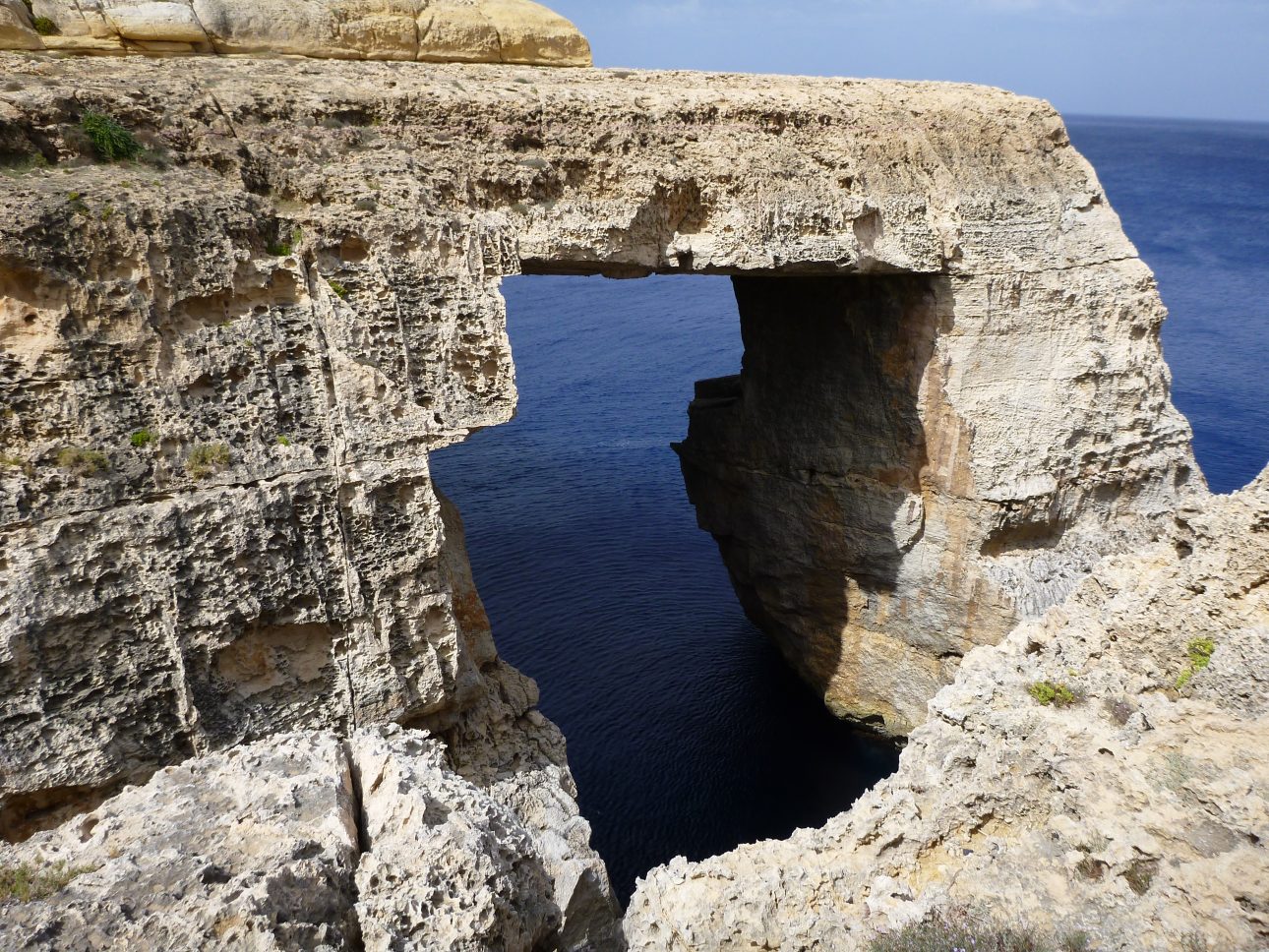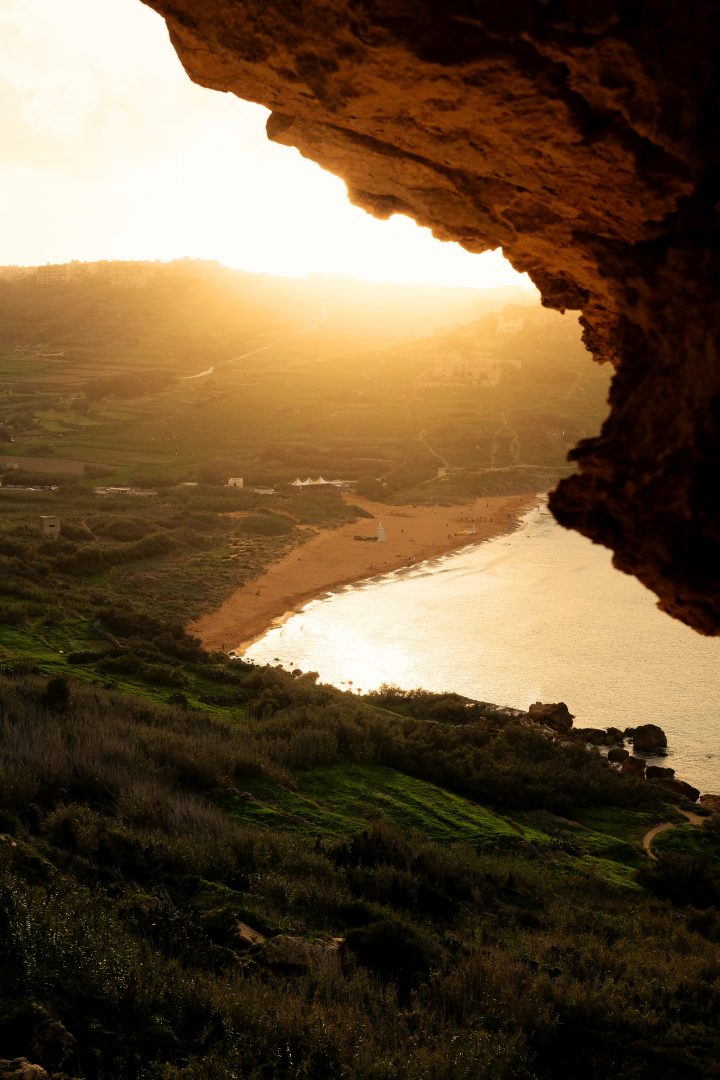
Gozo is the second largest island in the Maltese archipelago and is situated to the northwest of Malta, separated by the island of Comino and its Blue Lagoon.
Its capital, Victoria (Rabat in Maltese) is located in the centre of the island. Here you can find St George’s Basilica, nicknamed the “Golden Church” of Gozo because it is entirely covered with marble and golden stucco.
Not forgetting the Citadel, a magnificent fortified city that dominates the town. It offers a 360-degree view of the surrounding villages and countryside. Built on a plateau, it served as a checkpoint for the Knights of St John to protect the inhabitants from enemy invasions.
In the Citadel you can discover the Cathedral of Our Lady of the Assumption, built by the Maltese architect Lorenzo Gafà. There is also the Cathedral Museum, the Old Prison, the Archaeology Museum, the Folklore Museum, and the Natural History Museum.
Dwjera Bay
This is where the Azure Window stood before it fell in 2017, a rocky arch that plunged into the sea and is a UNESCO World Heritage Site. But you can still discover the Fungus Rock, named after a mushroom discovered by the Knights of St John. Used as a remedy for various illnesses, only the noble families could benefit from it. The Knights even forbade access to the rock to preserve it.

Despite the collapse of the Azure Window, you will have the opportunity to discover other arches on the archipelago, including the Wied il-Mielaħ Window, which is also in Gozo located in the village of Gharb.

Inland Sea
Inland Sea is a small bay connected to the sea by a tunnel of about 80m through the cliffs. It is possible to take boat trips to the many caves, from where you can see the colorful rocks and various fish.
Blue Hole
The Blue Hole is a water hole cut into the rocky coastline, connected to the sea by an underwater arch. It is one of Malta’s most famous dive sites.
Temples of Ggantija
In the village of Xaghra, there is a complex of two megalithic temples dating from 3600-3000 BC, called Ggantija which means “Giant” in Maltese.
The site consists of two temples: the southern and the northern. They form a vast site of more than 40 meters long and 6 meters high.
According to Gozitan legend, only giants with incredible strength could have transported and assembled these enormous stones.
Listed as a UNESCO World Heritage Site, these temples are older than the pyramids of Egypt and the famous stones of Stonehenge. They are also the first free-standing stone buildings in the world.
Xlendi Bay
A former small fishing port, Ix-Xlendi is a bay with a calm and relaxed atmosphere where you can enjoy good fresh fish.
The bay is surrounded by rocky cliffs which offer a view from where you can watch beautiful sunsets. The bay also has a small beach.
Ta’Pinu Basilica
The construction of the Ta’Pinu Basilica was completed in 1931. It is a place of pilgrimage for the Maltese and Gozitans.
Its history began in 1883 when a woman from the village of Gharb heard the voice of the Virgin Mary in the chapel, which was the only building on the site at the time. Following this event, several miracles were performed and the inhabitants decided to honor the Virgin by building a larger church.
The original chapel is located behind the main altar.

Marsalforn salt pans
To the west of Marsalforn are the Xwejni salt pans, which extend for almost 3km.
These salt pans date back to Phoenician and Roman times, and are still worked by a few families today. The production of salt is passed on from generation to generation and is part of the Gozitan tradition.

The beaches
- Ramla Bay
- San Blas
Sandy beaches.
- Hondoq Ir-Rummien, Qala
Located in the south of the island, this pebble beach is very popular for its turquoise water and its privileged location: caves, diving and snorkeling, view of Comino and Blue Lagoon.

Ta Cenc cliffs
Ta Cenc cliffs are over 130 meters high and offer an exceptional view. They are accessible on foot and are located south of Victoria, in the village of Sannat.
